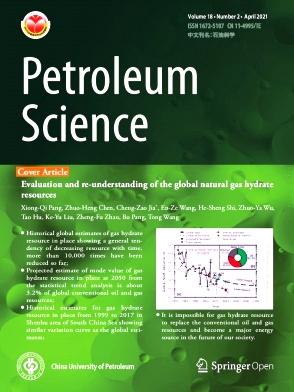湖相页岩中保留油的演化和生成机制:ReaxFF-MD 与热解模拟相结合的视角
IF 6
1区 工程技术
Q2 ENERGY & FUELS
引用次数: 0
摘要
本文章由计算机程序翻译,如有差异,请以英文原文为准。
Evolution and generation mechanism of retained oil in lacustrine shales: A combined ReaxFF-MD and pyrolysis simulation perspective
To accurately investigate the evolution characteristics and generation mechanism of retained oil, the study analyzed organic-rich lacustrine shale samples from the Paleogene Kongdian Formation in Cangdong Sag, Bohai Bay Basin. This analysis involves Rock-Eval pyrolysis, pyrolysis simulation experiments, Gas Chromatograph Mass Spectrometer (GC–MS), and reactive molecular dynamics simulations (ReaxFF). The results revealed the retained oil primarily consisted of n-alkanes with carbon numbers ranging from C14 to C36. The generation of retained oil occurred through three stages. A slow growth stage of production rate was observed before reaching the peak of oil production in Stage I. Stage II involved a rapid increase in oil retention, with C12–C17 and C24–C32 serving as the primary components, increasing continuously during the pyrolysis process. The generation process involved the cleavage of weak bonds, including bridging bonds (hydroxyl, oxy, peroxy, imino, amino, and nitro), ether bonds, and acid amides in the first stage (Ro = 0.50%–0.75%). The carbon chains in aromatic ring structures with heteroatomic functional groups breaks in the second stage (Ro = 0.75%–1.20%). In the third stage (Ro = 1.20%–2.50%), the ring structures underwent ring-opening reactions to synthesize iso-short-chain olefins and radicals, while further breakdown of aliphatic chains occurred. By coupling pyrolysis simulation experiments and molecular simulation technology, the evolution characteristics and bond breaking mechanism of retained oil in three stages were revealed, providing a reference for the formation and evolution mechanism of retained oil.
求助全文
通过发布文献求助,成功后即可免费获取论文全文。
去求助
来源期刊

Petroleum Science
地学-地球化学与地球物理
CiteScore
7.70
自引率
16.10%
发文量
311
审稿时长
63 days
期刊介绍:
Petroleum Science is the only English journal in China on petroleum science and technology that is intended for professionals engaged in petroleum science research and technical applications all over the world, as well as the managerial personnel of oil companies. It covers petroleum geology, petroleum geophysics, petroleum engineering, petrochemistry & chemical engineering, petroleum mechanics, and economic management. It aims to introduce the latest results in oil industry research in China, promote cooperation in petroleum science research between China and the rest of the world, and build a bridge for scientific communication between China and the world.
 求助内容:
求助内容: 应助结果提醒方式:
应助结果提醒方式:


